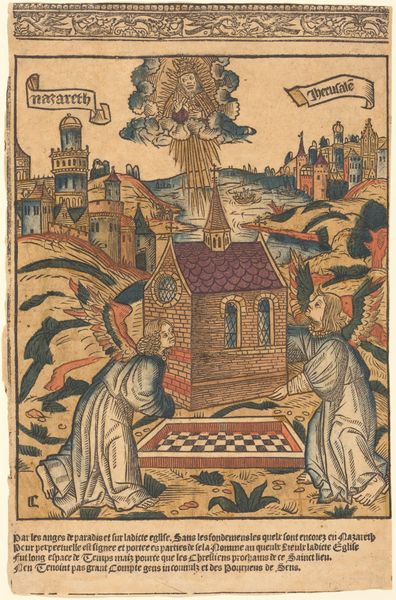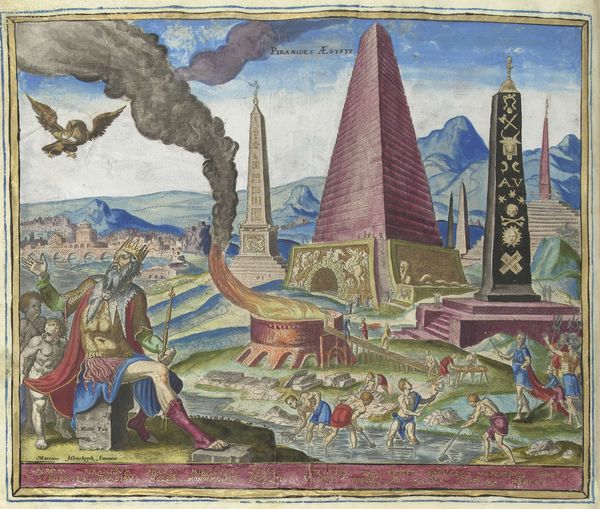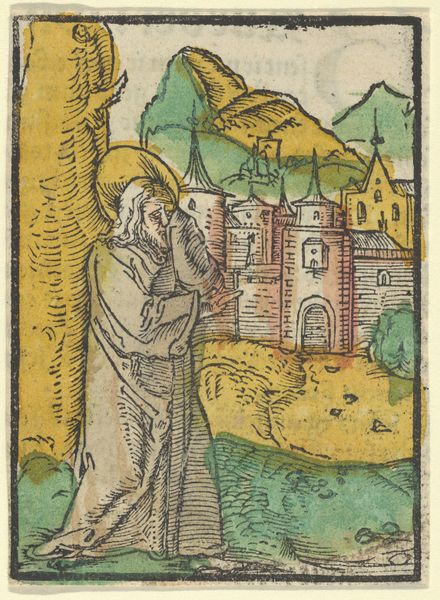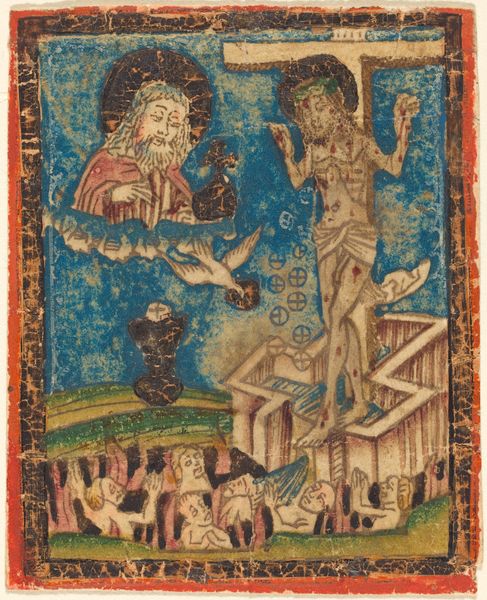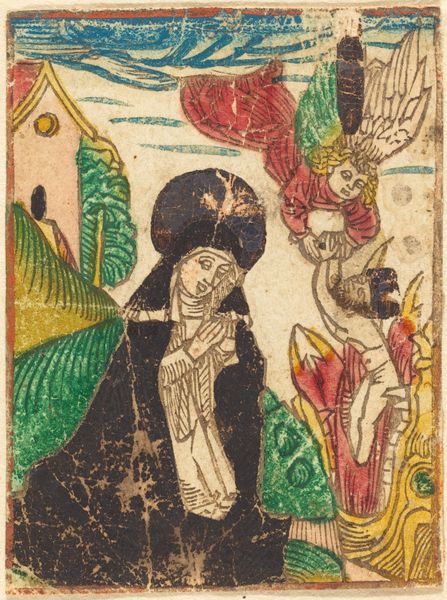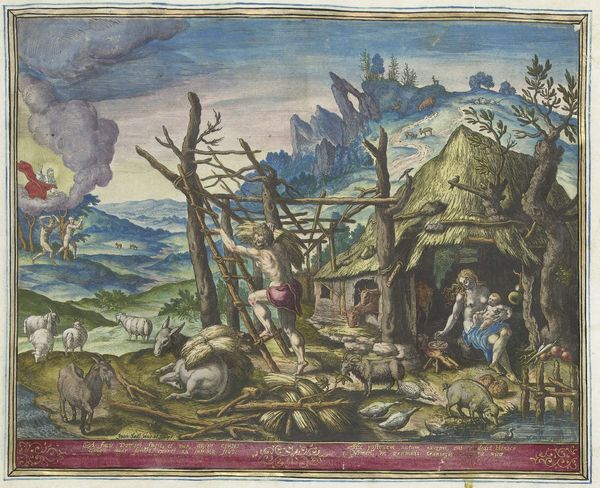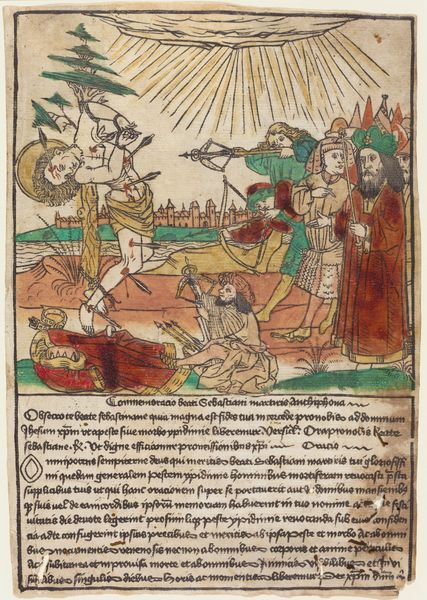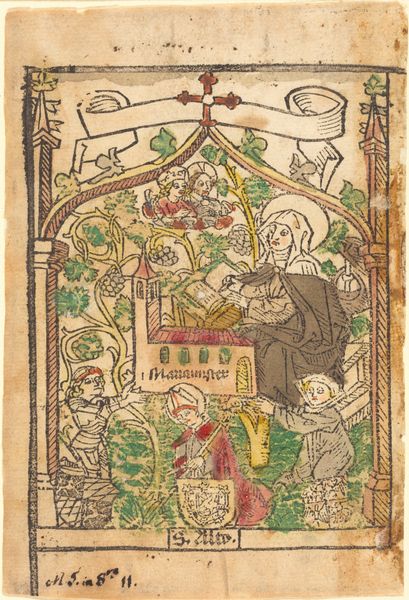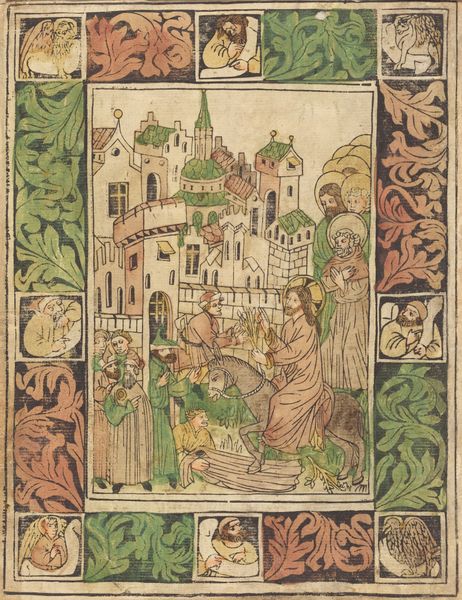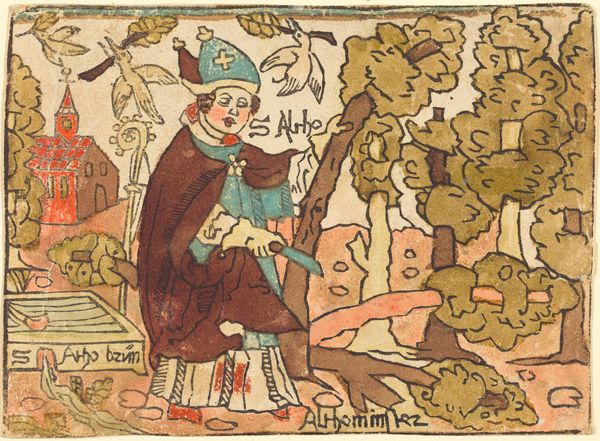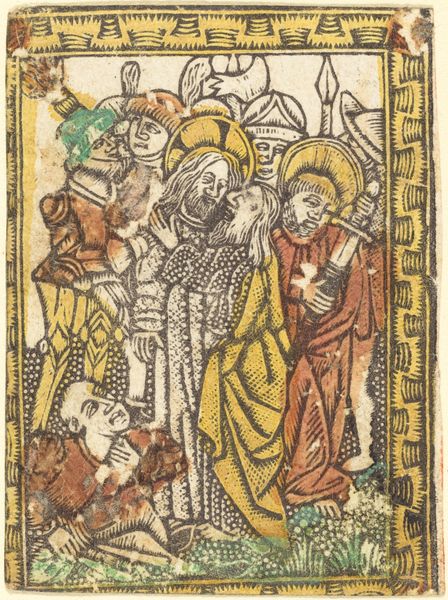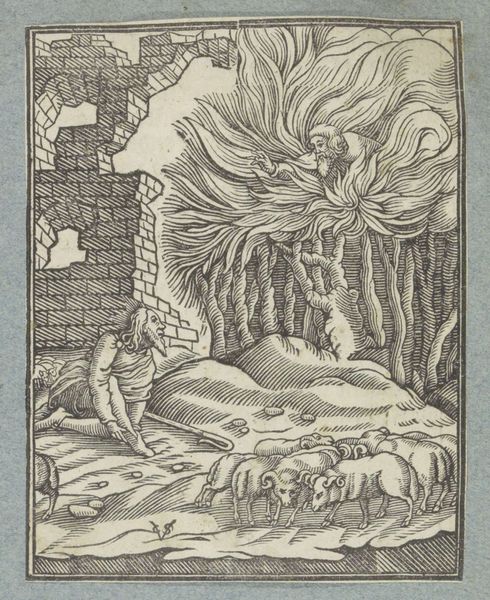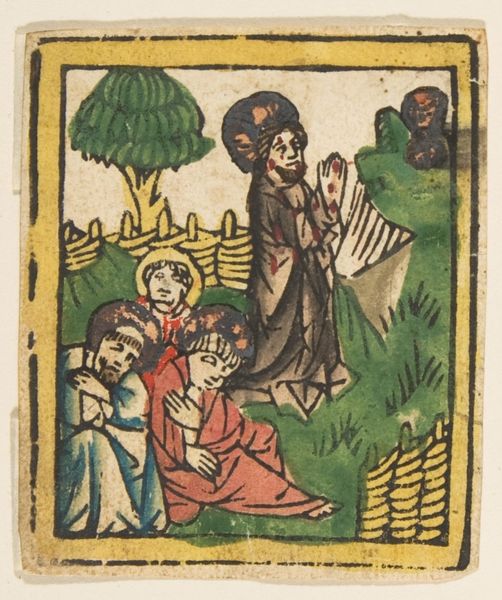
print, woodcut
#
medieval
#
narrative-art
# print
#
woodcut
#
history-painting
#
northern-renaissance
Dimensions: sheet: 14.1 × 16.9 cm (5 9/16 × 6 5/8 in.)
Copyright: National Gallery of Art: CC0 1.0
Editor: We're looking at a woodcut from around 1500, titled "Moses and the Burning Bush." It’s unsigned, from the Northern Renaissance. I find the composition quite striking, almost theatrical, with the juxtaposition of the tranquil town and the chaotic burning bush. What catches your eye about this piece? Curator: Formally, the organization of space immediately presents itself. Note how the pictorial plane is clearly divided into distinct registers – the background with its meticulously rendered cityscape, the middle ground teeming with figures and animals, and the foreground establishing a clear demarcation for the viewer. Editor: It’s almost like separate stage sets stacked on top of each other. Curator: Precisely. This deliberate layering invites an analysis of the symbolic weight carried by each plane. Observe the linear quality of the woodcut medium. The artist utilizes bold, declarative lines to define form, eschewing subtle gradations for clear, graphic articulation. This lends a sense of starkness to the narrative, don't you agree? Editor: I do. It gives the scene a real sense of drama, almost like a comic strip. Are you suggesting the linearity impacts how we understand the narrative's emotional content? Curator: Indeed. The formalized trees within the flames, how do those compare to, say, the detailing within the robes of Moses? Or consider the curious inclusion of the town behind; it's as if the landscape itself participates in the act of witnessing. Editor: This layered reading you've given makes me think of it in a whole new way. I was just focusing on the story! Curator: Such a reaction is common, which highlights the role form itself has in our interpretation.
Comments
No comments
Be the first to comment and join the conversation on the ultimate creative platform.
